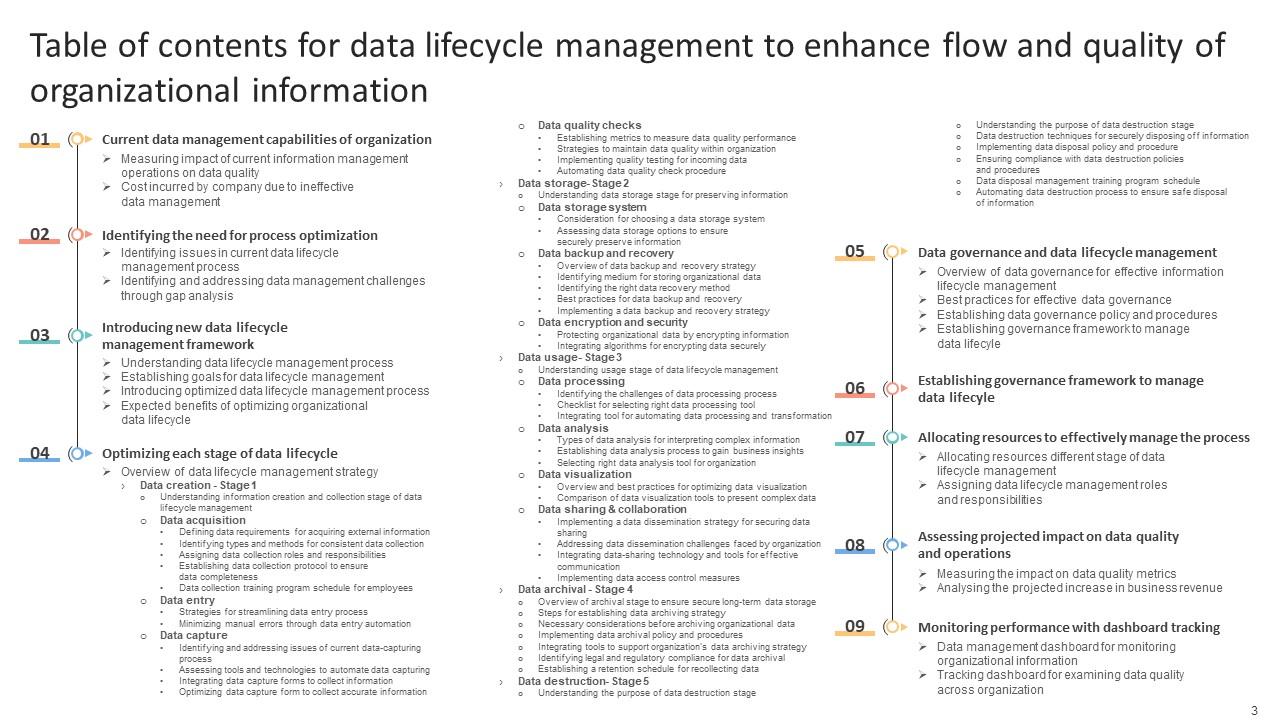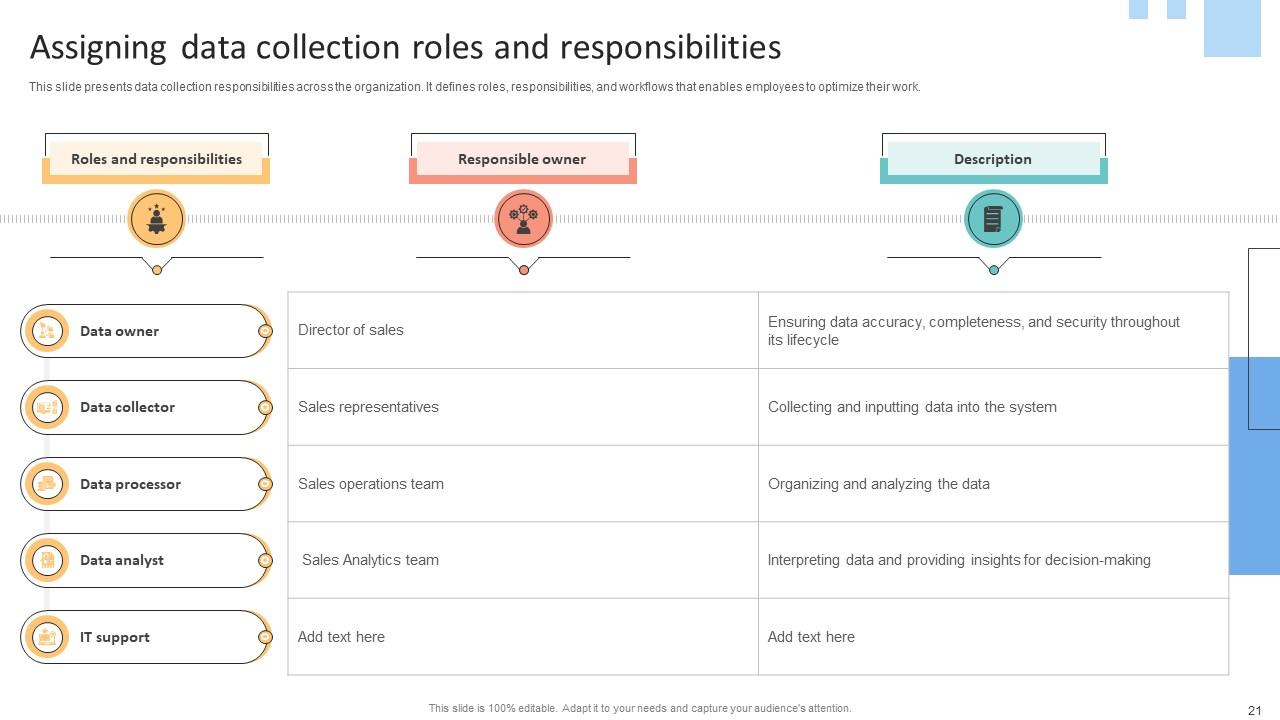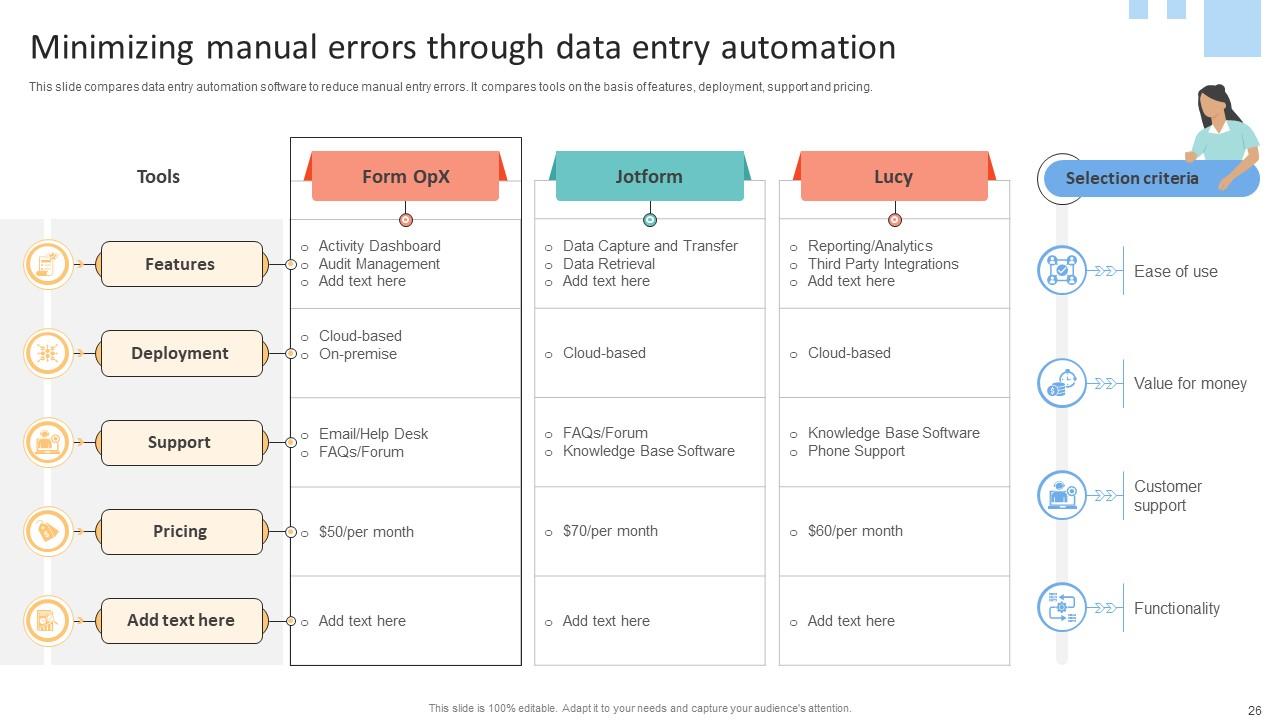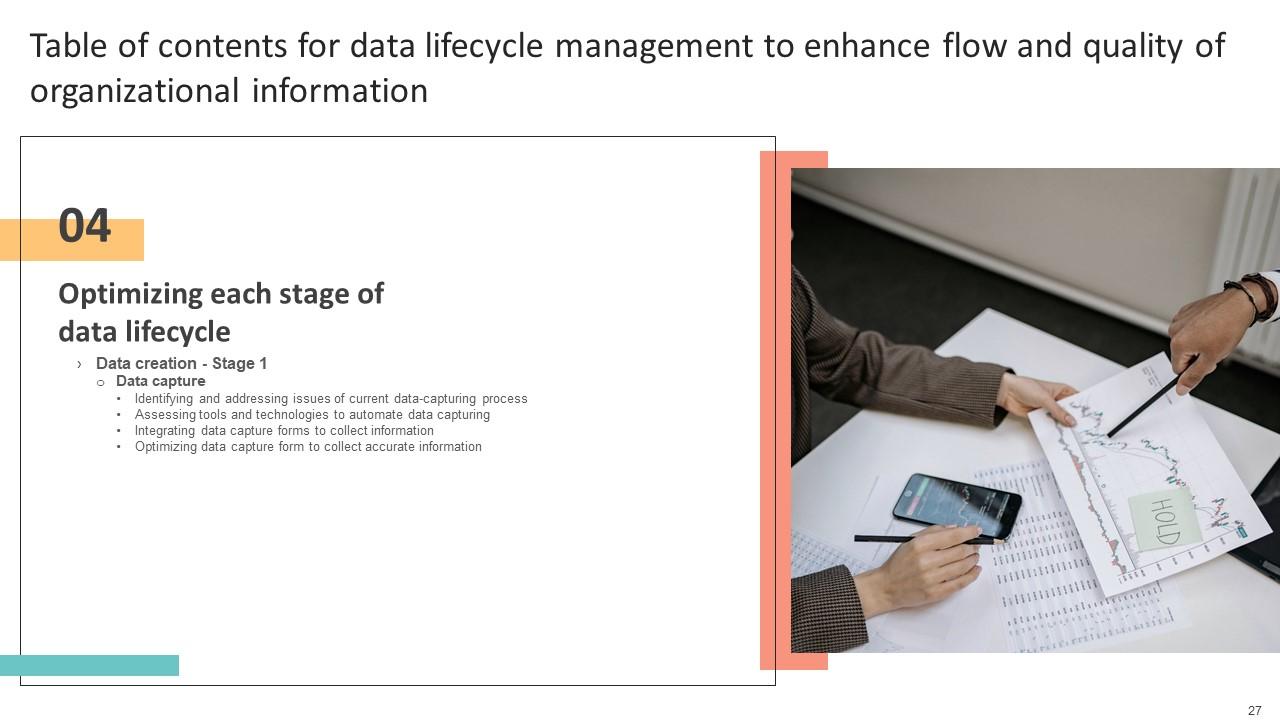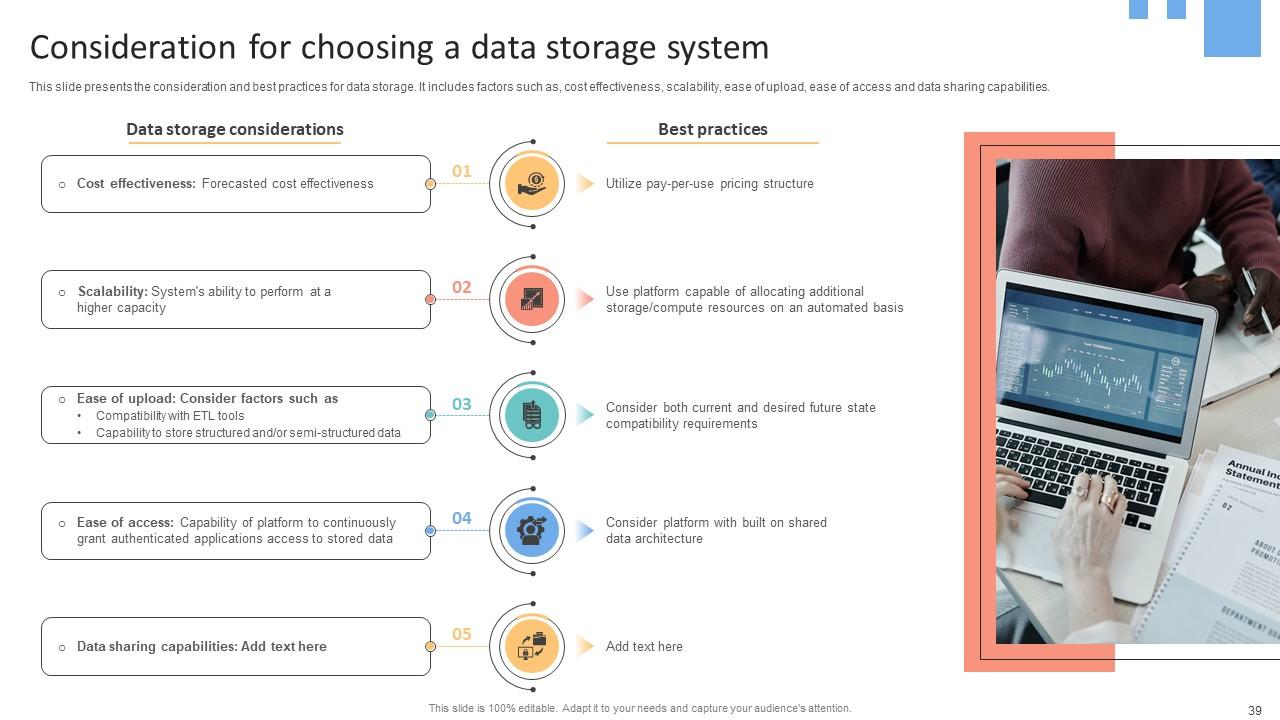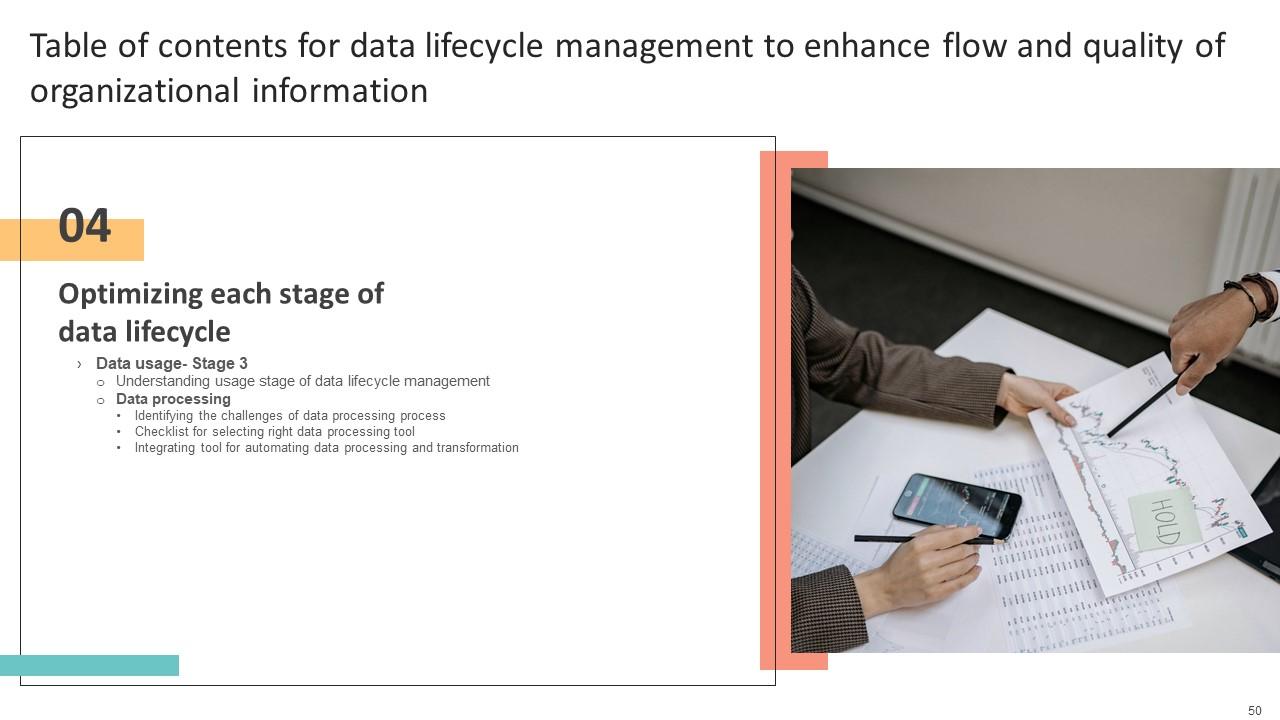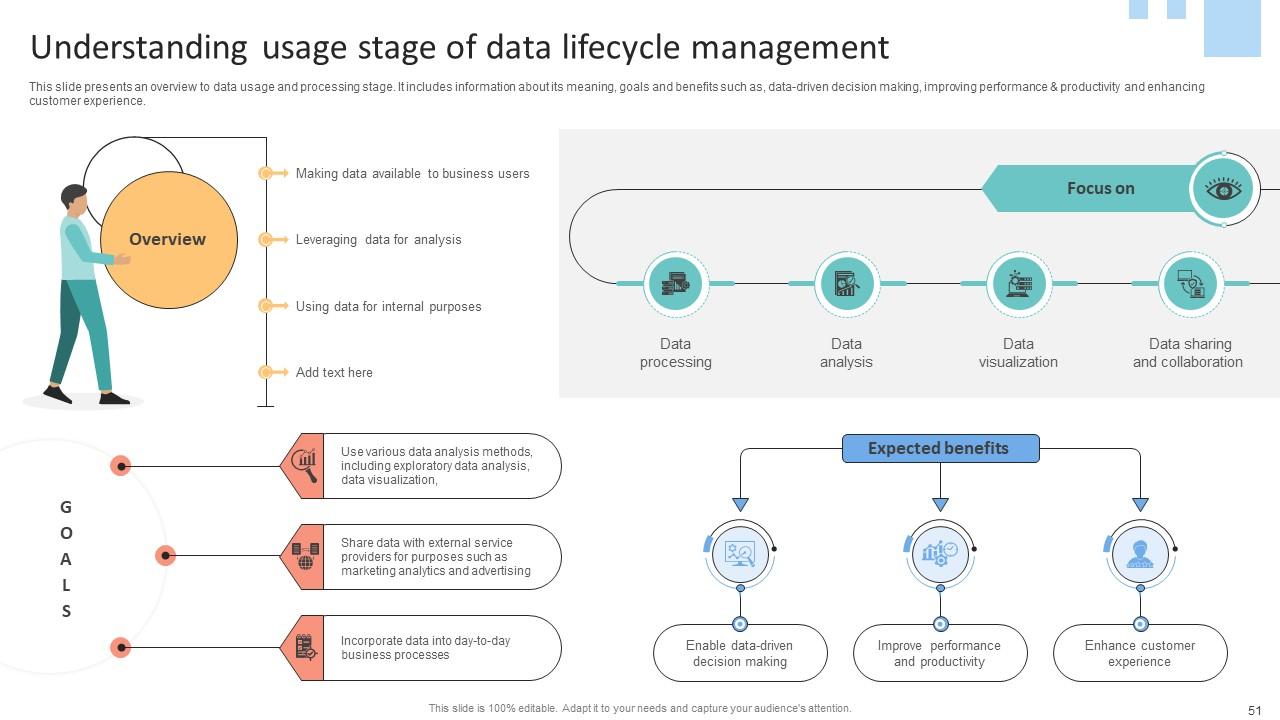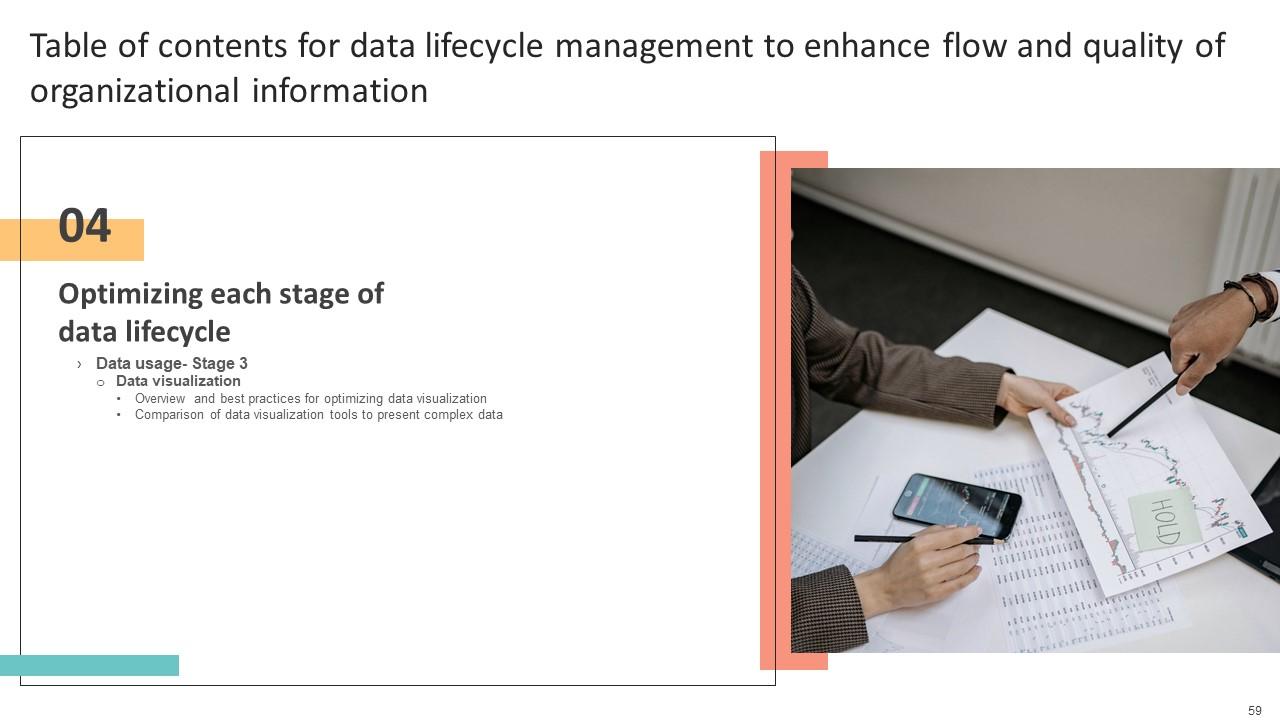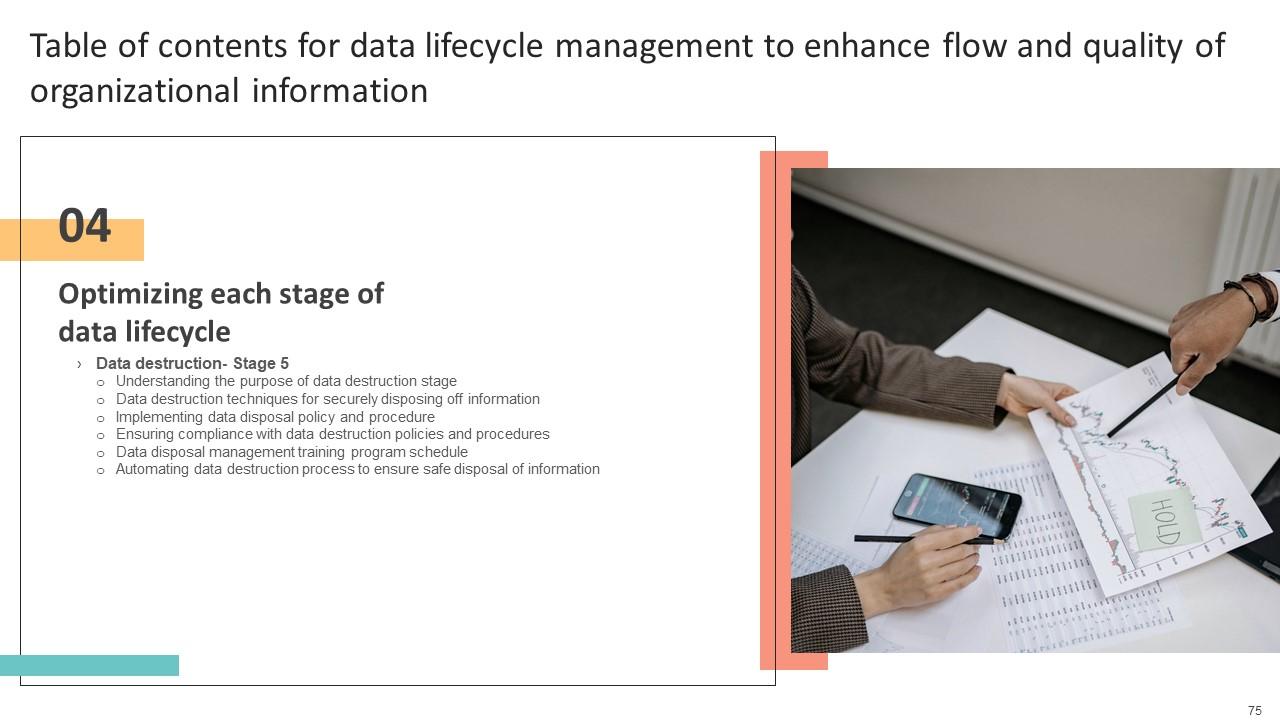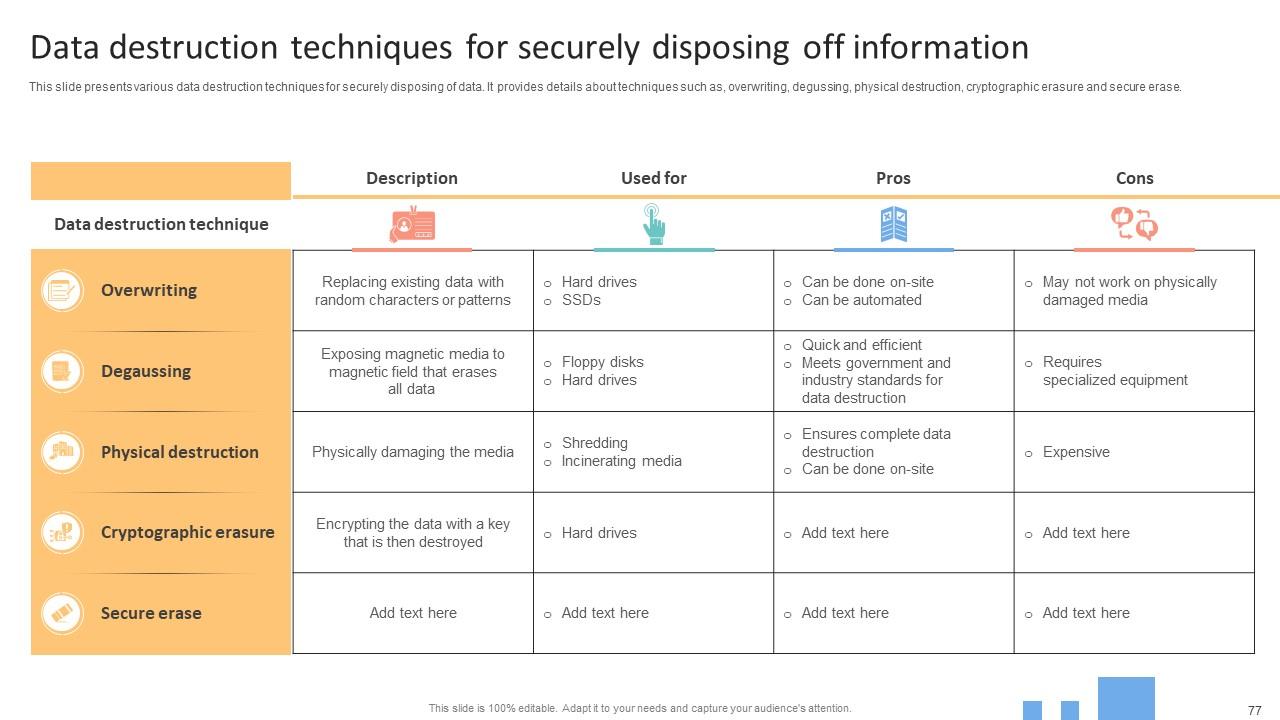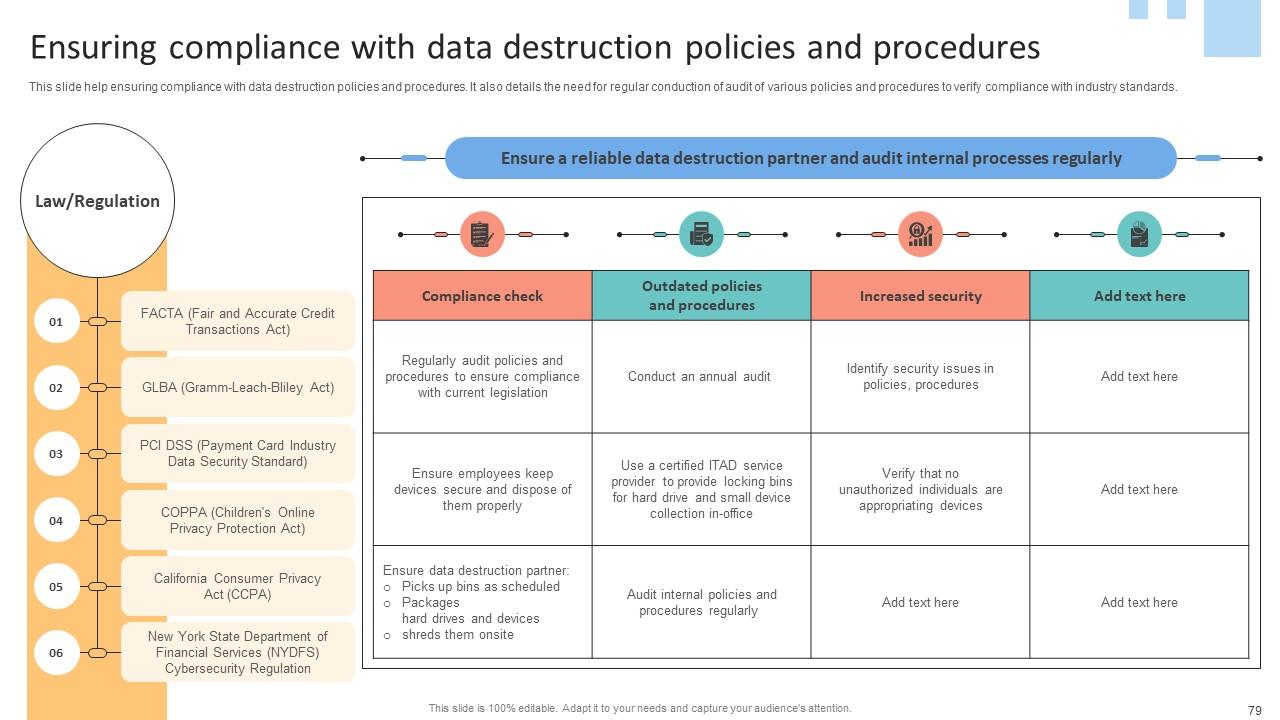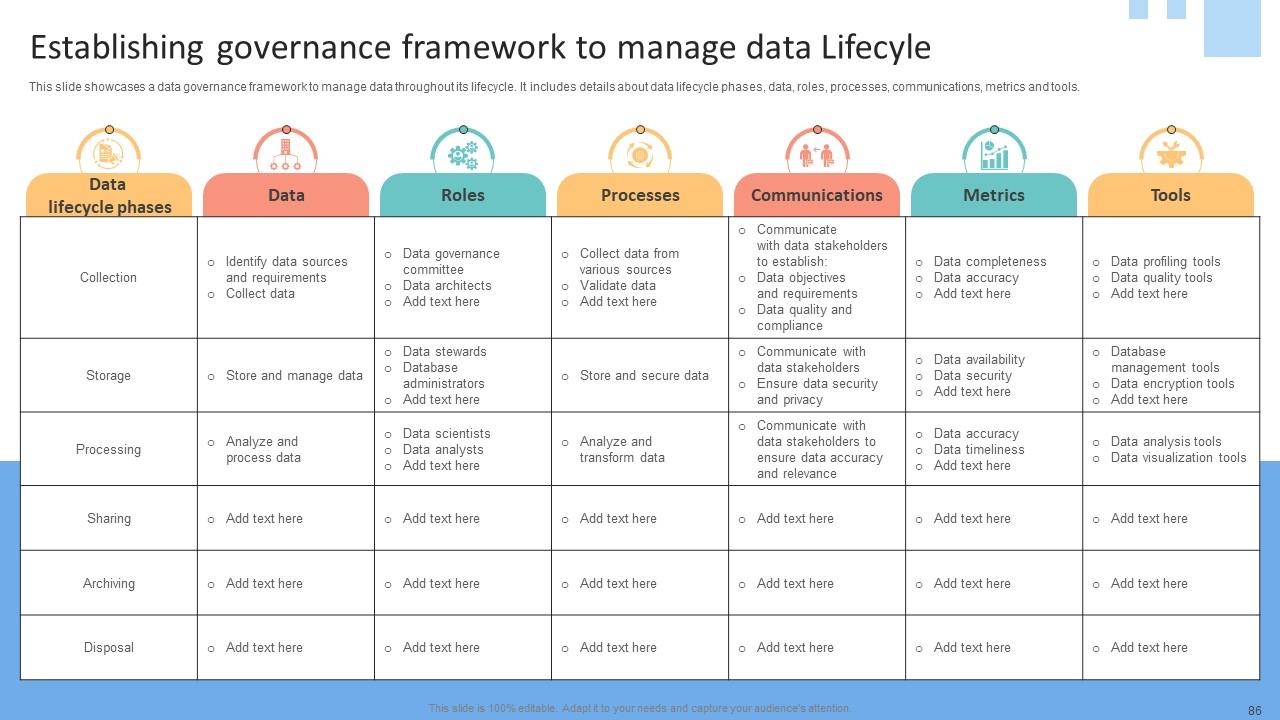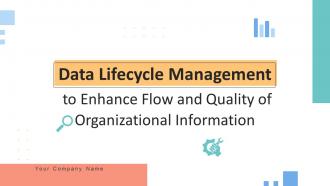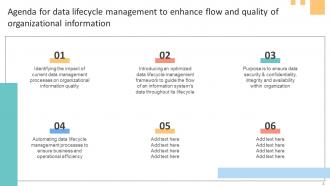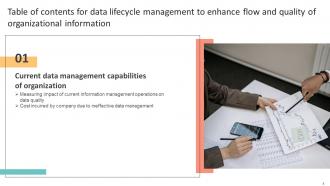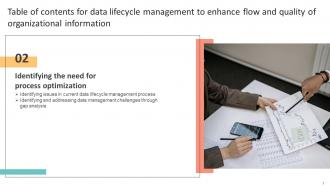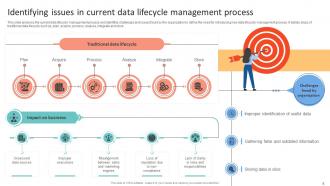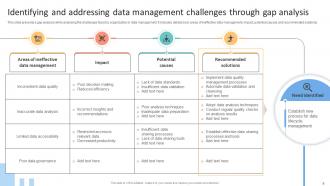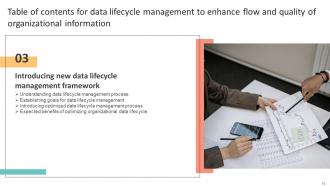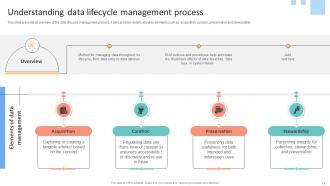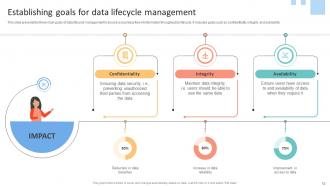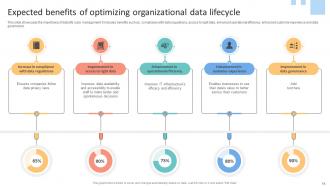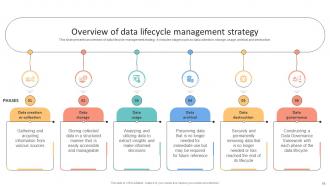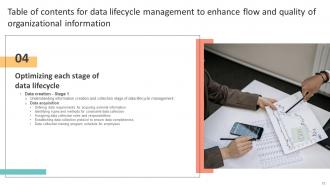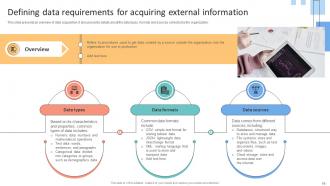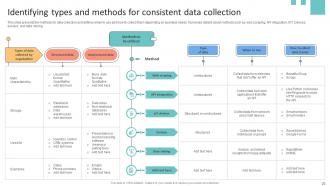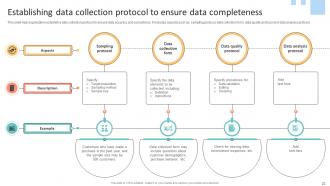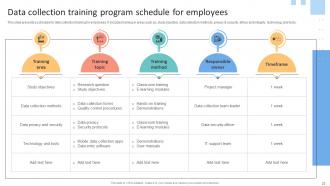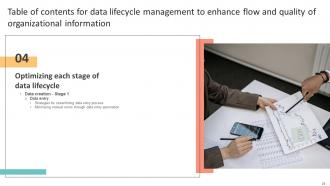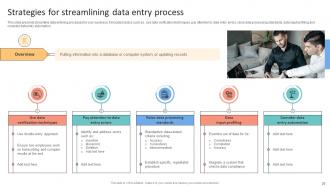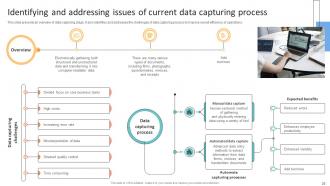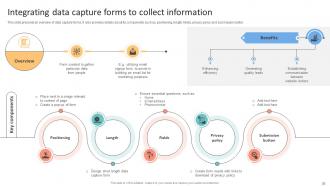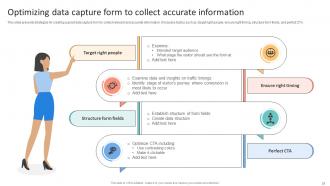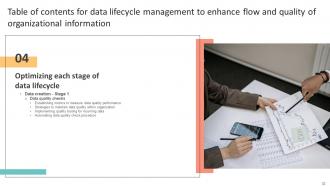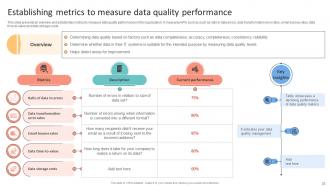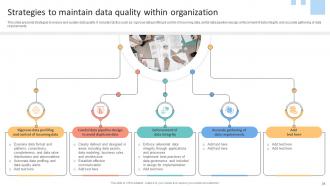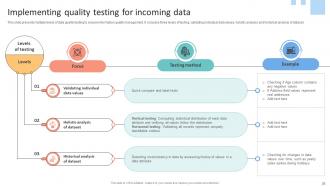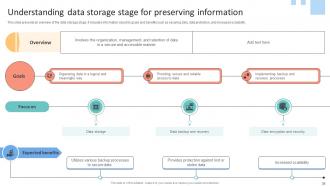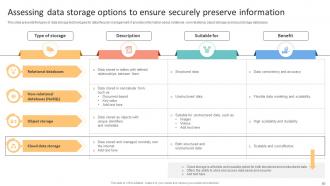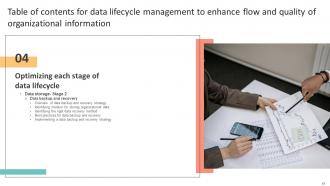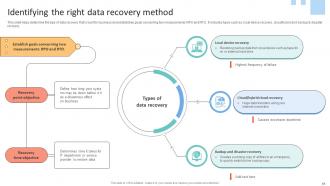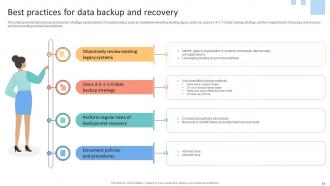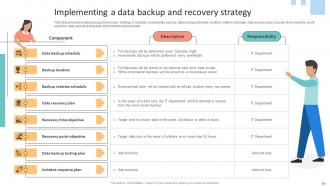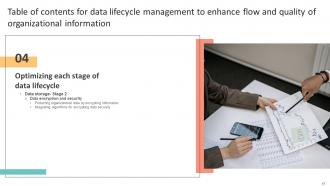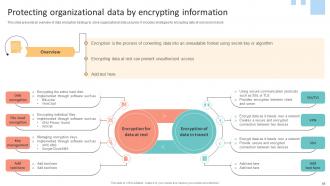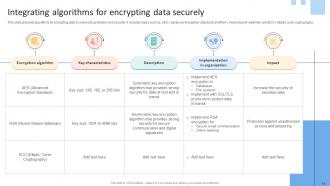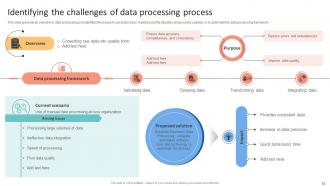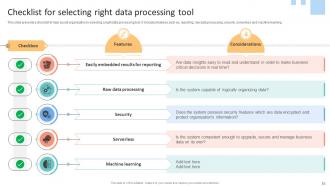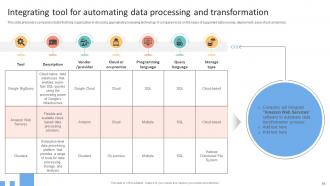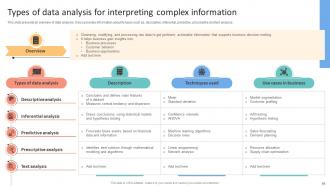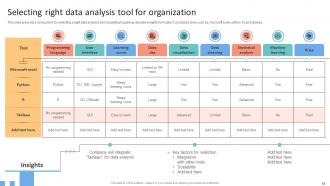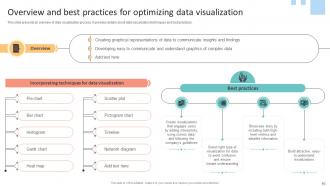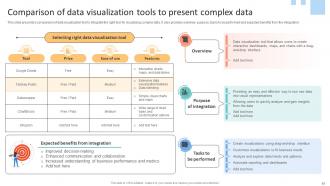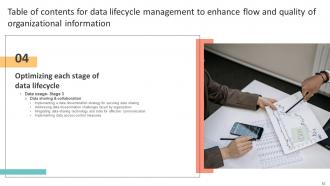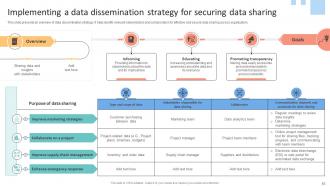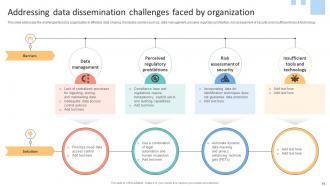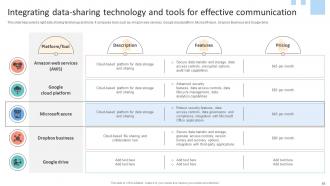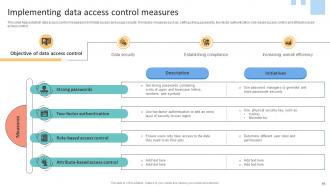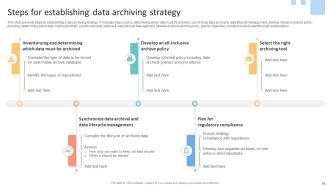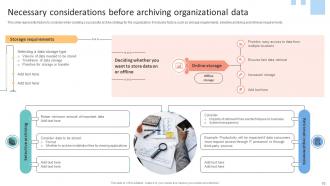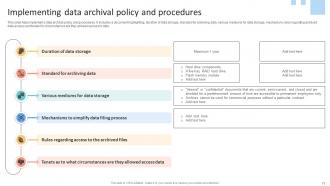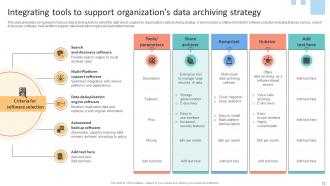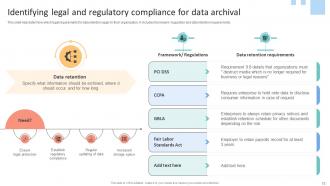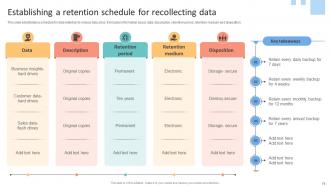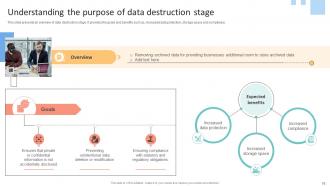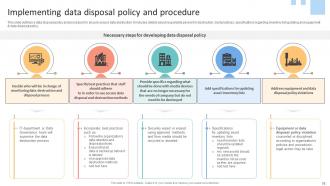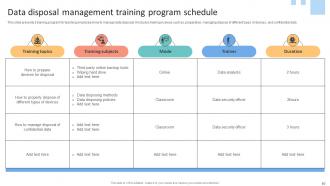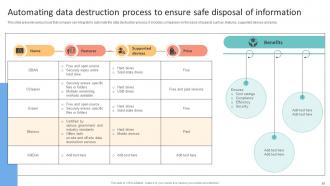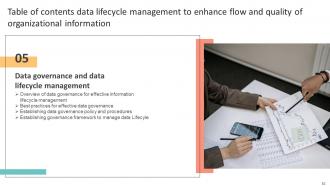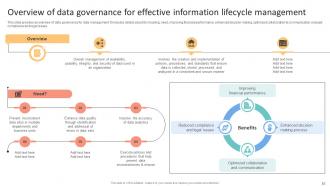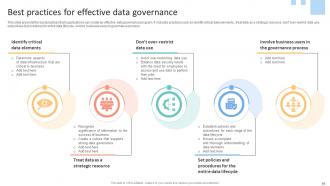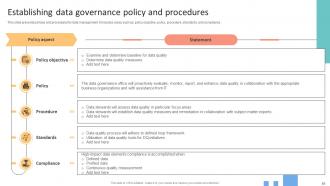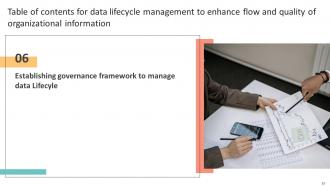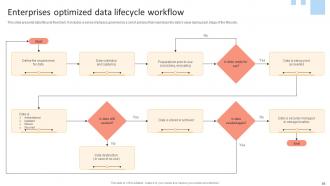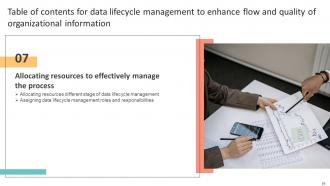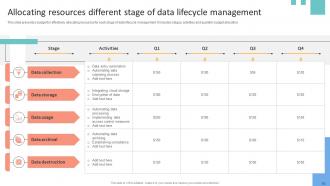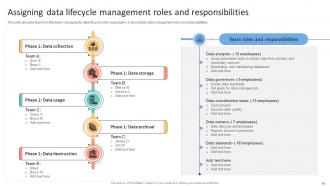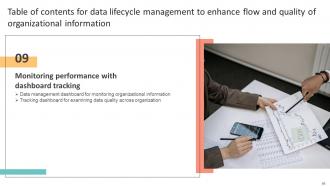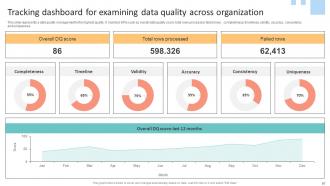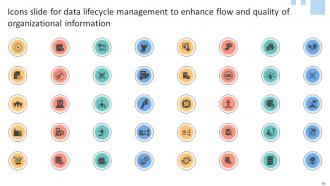Data Lifecycle Management To Enhance Flow And Quality Of Organizational Information Complete Deck
Data Lifecycle Management DLM refers to managing data throughout its entire lifecycle, from creation to disposal. Effective DLM ensures that data is accurate, secure, and compliant with legal and regulatory requirements. This complete deck Data Lifecycle Management to Enhance Flow and Quality of Organizational Information provides a full understanding of the data lifecycle management process. The presentation begins with identifying data quality issues and losses incurred by the organization. It analyzes the shortcomings in traditional data lifecycle management frameworks incorporated by enterprises and does a gap analysis to determine potential solutions. Further, it introduces an optimized DLM framework and presents strategies to optimize each of its stages. It includes stages such as data creation or collection, storage, usage, archival, and destruction. Our guide includes best practices for data quality checks, backup and recovery, encryption, data processing, analysis, visualization, sharing, collaboration, and governance. We also provide checklists, tools, and techniques for addressing data management challenges and measuring the impact on business operations. It also establishes a data governance framework and best practices for each data lifecycle stage. At last, it allocates budget and resources for optimizing each stage, while projecting a positive impact on business and analyzing dashboards to monitor data quality. Get access now.
You must be logged in to download this presentation.
 Impress your
Impress your audience
Editable
of Time
PowerPoint presentation slides
While your presentation may contain top-notch content, if it lacks visual appeal, you are not fully engaging your audience. Introducing our Data Lifecycle Management To Enhance Flow And Quality Of Organizational Information Complete Deck deck, designed to engage your audience. Our complete deck boasts a seamless blend of Creativity and versatility. You can effortlessly customize elements and color schemes to align with your brand identity. Save precious time with our pre-designed template, compatible with Microsoft versions and Google Slides. Plus, it is downloadable in multiple formats like JPG, JPEG, and PNG. Elevate your presentations and outshine your competitors effortlessly with our visually stunning 100 percent editable deck.
People who downloaded this PowerPoint presentation also viewed the following :
Content of this Powerpoint Presentation
Slide 1: This slide showcase title Data Lifecycle Management to Enhance Flow and Quality of Organizational Information. State Your Company Name.
Slide 2: This slide showcase Agenda for data lifecycle management to enhance flow and quality of organizational information.
Slide 3: This slide exhibit Table of content.
Slide 4: This slide highlights the Title for the Topics to be covered further.
Slide 5: This slide analyses the performance of KPIs to measure the effectiveness and efficiency of data operations within an organization.
Slide 6: This slide presents the current loss incurred by the company due to ineffective management of organizational data.
Slide 7: This slide highlights the Title for the Topics to be covered further.
Slide 8: This slide analyses the current data lifecycle management process and identifies challenges and issues faced by the organization.
Slide 9: This slide presents a gap analysis while analysing the challenges faced by organization in data management.
Slide 10: This slide highlights the Title for the Topics to be covered further.
Slide 11: This slide presents an overview of the data lifecycle management process.
Slide 12: This slide presents the three main goals of data lifecycle management to ensure a seamless flow of information throughout its lifecycle.
Slide 13: This slide introduces a new and optimized data lifecycle management process to ensure an unhindered and streamlined flow of information within organization.
Slide 14: This slide showcases the importance of data life cycle management. s
Slide 15: This slide highlights the Title for the Topics to be covered further.
Slide 16: This slide presents an overview of data lifecycle management strategy.
Slide 17: This slide highlights the Title for the Topics to be covered further.
Slide 18: This slide presents an overview of the data creation and collection stage.
Slide 19: This slide presents an overview of data acquisition.
Slide 20: This slide presents the methods for data collection and defines when to use and how to collect them depending on business needs.
Slide 21: This slide presents data collection responsibilities across the organization.
Slide 22: This slide help organization establish a data collection protocol to ensure data accuracy and consistency.
Slide 23: This slide presents a schedule for data collection training for employees.
Slide 24: This slide highlights the Title for the Topics to be covered further.
Slide 25: This slide presents streamline data entering processes for your business.
Slide 26: This slide compares data entry automation software to reduce manual entry errors.
Slide 27: This slide highlights the Title for the Topics to be covered further.
Slide 28: This slide presents an overview of data-capturing stage.
Slide 29: This slide presents the several methods of digital data capture that are available to meet the needs of enterprises.
Slide 30: This slide presents an overview of data capture forms.
Slide 31: This slide presents strategies for creating a great data capture form to collect relevant and accurate information.
Slide 32: This slide highlights the Title for the Topics to be covered further.
Slide 33: This slide presents an overview and establishes metrics to measure data quality performance in the organization.
Slide 34: This slide presents strategies to ensure and sustain data quality.
Slide 35: This slide presents multiple levels of data quality testing to ensure information quality management.
Slide 36: This slide presents tools to automate the data quality check process.
Slide 37: This slide highlights the Title for the Topics to be covered further.
Slide 38: This slide presents an overview of the data storage stage.
Slide 39: This slide presents the consideration and best practices for data storage.
Slide 40: This slide presents the types of data storage technologies for data lifecycle management.
Slide 41: This slide highlights the Title for the Topics to be covered further.
Slide 42: This slide presents an overview of data backup and recovery strategy.
Slide 43: This slide presents the levels of data backup to identify the most suitable place to store organizational data.
Slide 44: This slide helps determine the type of data recovery that’s best for business and establishes goals concerning two measurements: RPO and RTO.
Slide 45: This slide presents data backup and recovery strategy best practices.
Slide 46: This slide presents a data backup and recovery strategy.
Slide 47: This slide highlights the Title for the Topics to be covered further.
Slide 48: This slide presents an overview of data encryption strategy to store organizational data securely.
Slide 49: This slide presents algorithms for encrypting data to ensure its protection and security.
Slide 50: This slide highlights the Title for the Topics to be covered further.
Slide 51: This slide presents an overview to data usage and processing stage.
Slide 52: This slide presents an overview to data processing and identifies the issues in current process.
Slide 53: This slide presents a checklist to help assist organization in selecting a right data processing tool.
Slide 54: This slide presents a comparison table that help organization in choosing appropriate processing technology.
Slide 55: This slide highlights the Title for the Topics to be covered further.
Slide 56: This slide presents an overview of data analysis.
Slide 57: This slide presents the methods for data analysis.
Slide 58: This slide presents a comparison for selecting a right data analysis tools assisting in gaining valuable insights from data.
Slide 59: This slide highlights the Title for the Topics to be covered further.
Slide 60: This slide presents an overview of data visualization process. It provides details about data visualization techniques and best practices.
Slide 61: This slide presents a comparison of data visualization tool to integrate the right tool for visualizing complex data.
Slide 62: This slide highlights the Title for the Topics to be covered further.
Slide 63: This slide presents an overview of data dissemination strategy.
Slide 64: This slide addresses the challenges faced by organization in effective data sharing.
Slide 65: This slide help select a right data sharing technology and tools.
Slide 66: This slide help establish data access control measures to limit data access and usage security.
Slide 67: This slide highlights the Title for the Topics to be covered further.
Slide 68: This stage presents an overview of the archival data stage to optimizes how necessary resources perform in the active system.
Slide 69: This slide presents steps for establishing a data archiving strategy.
Slide 70: This slide represents factors to consider when creating a successful archive strategy for the organization.
Slide 71: This slide help implement a data archival policy and procedures.
Slide 72: This slide presents a comparison of various data archiving tools to select the right one to support an organization's data archiving strategy.
Slide 73: This slide help determine which legal requirements for data retention apply to their organization.
Slide 74: This slide establishes a schedule for data retention to reduce data silos.
Slide 75: This slide highlights the Title for the Topics to be covered further.
Slide 76: This slide presents an overview of data destruction stage.
Slide 77: This slide presents various data destruction techniques for securely disposing of data.
Slide 78: This slide outlines a data disposal policy and procedure for ensure secure data destruction.
Slide 79: This slide help ensuring compliance with data destruction policies and procedures.
Slide 80: This slide presents a training program for teaching employees how to manage data disposal.
Slide 81: This slide presents various tools that company can integrate to automate the data destruction process.
Slide 82: This slide highlights the Title for the Topics to be covered further.
Slide 83: This slide provides an overview of data governance for data management.
Slide 84: This slide presents the best practices that organizations can create an effective data governance program.
Slide 85: This slide presents policies and procedures for data management.
Slide 86: This slide showcases a data governance framework to manage data throughout its lifecycle.\
Slide 87: This slide highlights the Title for the Topics to be covered further.
Slide 88: This slide presents data lifecycle flowchart.
Slide 89: This slide highlights the Title for the Topics to be covered further.
Slide 90: This slide presents a budget for effectively allocating resources for each stage of data lifecycle management.
Slide 91: This slide allocates teams for effectively managing the data lifecycle in the organization.
Slide 92: This slide highlights the Title for the Topics to be covered further.
Slide 93: This slide analyses the performance of KPIs to measure the effectiveness and efficiency optimized data lifecycle management.
Slide 94: This slide presents the current loss incurred by the company due to ineffective management of organizational data.
Slide 95: This slide highlights the Title for the Topics to be covered further.
Slide 96: This slide represents a data management dashboard. It monitors KPIs such as capacity by department, redundant content, obsolete content and trivial content.
Slide 97: This slide represents a data quality management to the highest quality.
Slide 98: This slide shows all the icons included in the presentation.
Slide 99: This is a Thank You slide with address, contact numbers and email address.
Data Lifecycle Management To Enhance Flow And Quality Of Organizational Information Complete Deck with all 108 slides:
Use our Data Lifecycle Management To Enhance Flow And Quality Of Organizational Information Complete Deck to effectively help you save your valuable time. They are readymade to fit into any presentation structure.
-
Delighted to see unique and eye-catching PowerPoint designs that are so easy to customize.
-
I discovered this website through a google search, the services matched my needs perfectly and the pricing was very reasonable. I was thrilled with the product and the customer service. I will definitely use their slides again for my presentations and recommend them to other colleagues.





